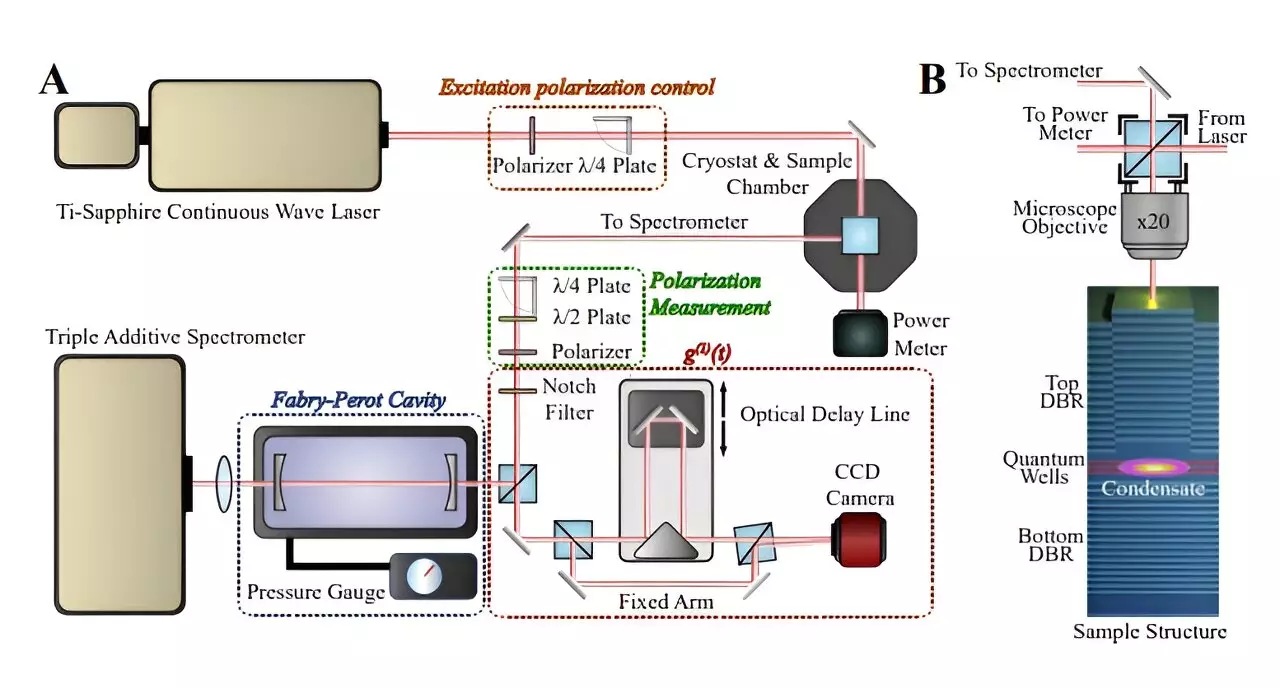Researchers have recently made a significant breakthrough in the field of quantum physics by observing a time crystal on a microscale semiconductor chip. The time crystal, oscillating at a rate of several billion times per second, has revealed exceptionally high non-linear dynamics in the GHz range. This groundbreaking discovery, unveiled in a study published in Science, establishes a firm connection between previously uncorrelated areas of non-linear exciton-polariton dynamics and coherent optomechanics at GHz frequencies.
The research was conducted by scientists from the Paul-Drude-Institute for Solid State Electronics (PDI) in Berlin, Germany, and the Centro Atómico Bariloche and the Instituto Balseiro (CAB-IB) in Argentina. They utilized a high-quality semiconductor-based sample designed and fabricated at PDI to act as a trap for coherent light-matter condensates. By stacking one-atom-thick layers of semiconductor materials under ultrahigh vacuum conditions, they created a micron-sized “box” capable of trapping millions of quantum particles. This sample was then transferred to CAB-IB for testing.
When the team at CAB-IB directed a time-independent continuous laser at the semiconductor sample, they observed that the particles it contained began to oscillate at GHz frequencies, reaching up to a billion oscillations per second. This observation marked the first time sustained oscillations in this frequency range were witnessed in a condensate sample on a semiconductor device. Moreover, the researchers found that they could fine-tune these oscillations by adjusting the laser’s optical power.
Building on Nobel-Prize-winning physicist Frank Wilczek’s theory of time crystals, researchers have been on a quest to find these elusive many-body systems composed of particles and quasiparticles that exhibit periodic variations in time. Wilczek’s theory posed a fundamental question about the temporal behavior of quantum systems with many particles. While the concept of time crystals was initially considered implausible, the recent findings have rekindled interest in time crystal behavior in both isolated and open systems.
The discovery of time crystals on a semiconductor chip opens up new avenues for research and applications in integrated and microwave photonics. The unique properties of time crystals, when integrated with semiconductor-based non-linear optoelectronic systems, hold promise for advanced applications in on-chip photonics. By understanding the internal dynamics of these systems, researchers aim to harness and control their behavior for potential applications in quantum information technologies and photon-to-radiofrequency conversion.
The observation of time crystals on a semiconductor chip represents a significant advancement in the field of quantum physics and optoelectronics. The ability to control and manipulate oscillations at GHz frequencies paves the way for innovative applications in integrated photonics and quantum information technologies. As researchers continue to explore the behavior of time crystals and their interactions with quantum materials, we can anticipate further developments that will revolutionize various technological domains.



Leave a Reply